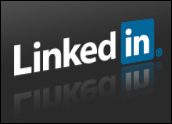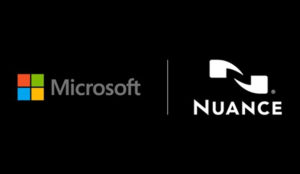Salesforce has agreed to acquire Quip, Quip CEO Bret Taylor and Head of Product Kevin Gibbs announced Monday.
Quip lets users manage live documents throughout the collaboration process.
The deal is worth about US$582 million, according to a Salesforce filing with the U.S. Securities and Exchange Commission.
Quip provides a chat feature that’s built into every document and spreadsheet. It includes a smart inbox, lets users direct-message team members and comment directly on any piece of content; allows insertion of items such as code, images, cells, and spreadsheets into a document; and supports smart notifications.
Users can set permissions at the group or folder level, and content is encrypted. It offers single sign-on for third-party apps. Quip works on desktops and mobile devices.
Quip will “be able to extend the Salesforce Customer Success Platform in powerful new ways with our next-generation productivity capabilities,” Quip’s Taylor and Gibbs wrote. “The possibilities of mixing data, content, and communications are amazing.”
Next-Gen Content Creation and Collaboration
Quip runs on Mac OS 10.8 or higher, Windows 7 or higher, iOS 8 or higher, Android 4.0.3 or higher, and the Apple Watch. It also runs on Chrome, Safari, or Firefox.
The application is available in 12 languages, including English. Chinese, Korean, Spanish, French, Italian, and Dutch.
Quip charges small business customers $30 a month for a team of five and $10 per month for each additional person, with an annual commitment. Enterprises pay $25 per month per person and get additional features, including access to the Quip API for customization, e-discovery and programmatic auditing, and block sharing.
“Quip is a leader in next-generation content creation and team collaboration,” said Alan Lepofsky, principal analyst at Constellation Research.
“I look forward to seeing how Salesforce leverages Quip to create useful business documents that help employees create and share information more effectively,” he told CRM Buyer.
Ecosystem Building
The purchase gives Salesforce two things it currently doesn’t have, Lepofsky said. One is a long-form content creation engine, and the other is persistent chat.
“You can create short posts in [Salesforce] Chatter and Community Cloud, but Salesforce doesn’t have a tool for creating truly compelling content,” he pointed out.
Quip’s persistent chat rooms, which let teams have conversations, “compete with Chatter but are considered more lightweight,” Lepofsky noted. “It’s more like text messaging and less like Facebook.”
Salesforce “was early to the game in recognizing the value of collaboration and content around CRM processes with Chatter and content,” noted Rebecca Wettemann, a research vice president at Nucleus Research.
Integrating Quip “gives Salesforce more of an answer to the Microsoft Dynamics 365 integration of Office and CRM,” she told CRM Buyer.
Microsoft last month announced Microsoft Dynamics 365 and Microsoft AppSource, which bring deep integration to ERP, CRM, and desktop productivity capabilities.
The goal is to create a “large ecosystem of compatible products, built on the same standards and supported by the same platform,” said Denis Pombriant, principal at Beagle Research.
The Quip purchase will let users integrate Salesforce business objects — such as customer records, support tickets, and marketing campaigns — into Quip documents, Constellation’s Lepofsky said.
Profiting at the Edge
“Tying collaboration to business processes like CRM delivers significant value,” observed Nucleus Research’s Wettemann.
As core CRM capabilities become increasingly commoditized, vendors have two options, according to Nucleus. They can add edge capabilities that deliver more value or invest more in usability — and most have done both.
“Edge CRM apps deliver 4.2 times more ROI than core CRM functions, and [we] can envision many Quip-Salesforce extensions meeting that profile,” Wettemann said.
The Next Oracle?
“The point of the acquisition is to continue building out the [Salesforce] platform,” suggested Pombriant.
“Salesforce sees itself as becoming a latter-day Oracle or similar vendor,” he told CRM Buyer. “To do this, they need to have as broad an offering as possible.”
Microsoft Word doesn’t meet current business needs because “documents have become primary points of collaboration, especially for businesses that are spread around a geography,” Pombriant noted. “Consequently, having a word processor that integrates well with the other components of a modern front office makes sense.”


























































Hi!
My name is Mark Leederman. I need to collect data from Quip for an eDiscovery case. Do you know any tools that could help me?
Thank you!
Hi Mark! Did you ever find a solution for this? Onna integrates directly with Quip to collect and export data for e-discovery purposes. Here’s a how-to-article: intercom.help/onna/integrations/web-integrations/how-to-collect-from-quip